Text by Melina Roise. Photos by Christopher Kayden.
On Thursday, April 6th, 2023, Misty Cook (Davids), M.S., visited Bard’s student-run Community Garden to lead a botanical medicine walk in the tradition of the Stockbridge-Munsee Band of Mohicans Tribe.
Misty Cook (Davids), M.S., studied Medicines from the Stockbridge-Munsee Band of Mohicans Tribe. In MEDICINE GENERATIONS, Natural Native American Medicines Traditional to the Stockbridge-Munsee Band of Mohicans Indian Tribe, Cook documented, primarily through community sourced knowledge through oral tradition, 58 Native American herbal Medicines. The text includes the history of these Medicines as utilized and passed down through her family tree of Wolf Clan Medicine people. She began the walk by acknowledging the face on the cover of her book, Granny Gardener, a well known ancestor who kept much of the knowledge Misty has gathered and shared alive.
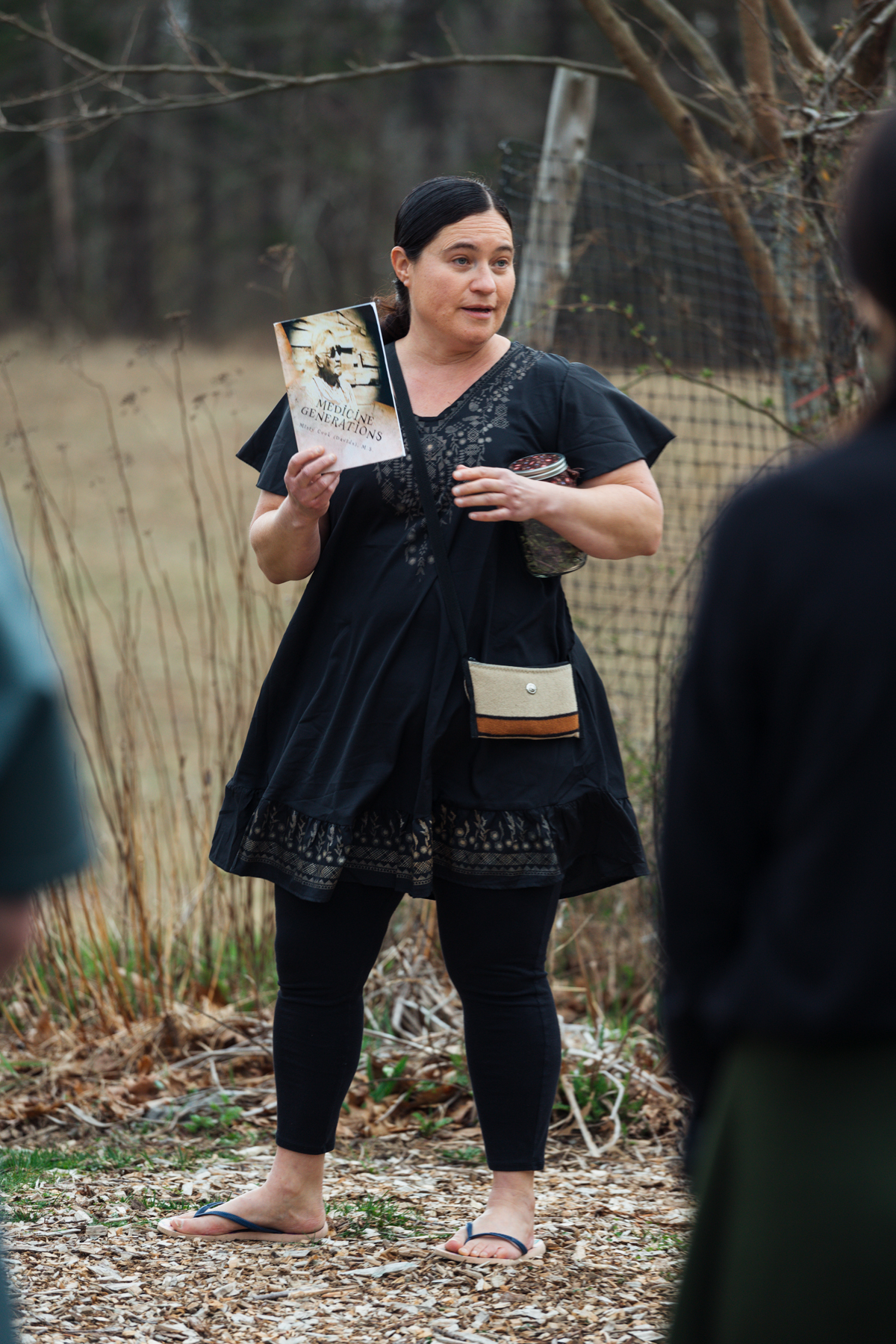
The walk took place within the farm talks series of Common Ground, echoing continued student and institutional pursuits towards justice-forward relationships with the land the college exists upon and within, including ongoing and overlapping projects of developing an engaged land acknowledgement curriculum and Center for Indigenous Studies on campus (Rethinking Place), student-run herbalism (Wild Roots Wellness Collective) and food justice (BardEATS) collectives, citizen science projects (Center for Environmental Sciences and Humanities), the Bard Farm, and work towards more fully acknowledging the Bard and Montgomery families history of enslavement (slavery acknowledgement), among others.
IN OUR WALK AROUND THE COMMUNITY GARDEN ON CAMPUS, we were honored to meet many of the plant medicines Misty and her ancestors studied and wrote about, including goldenrod, fiddlehead ferns, catnip, chamomile, and yarrow.
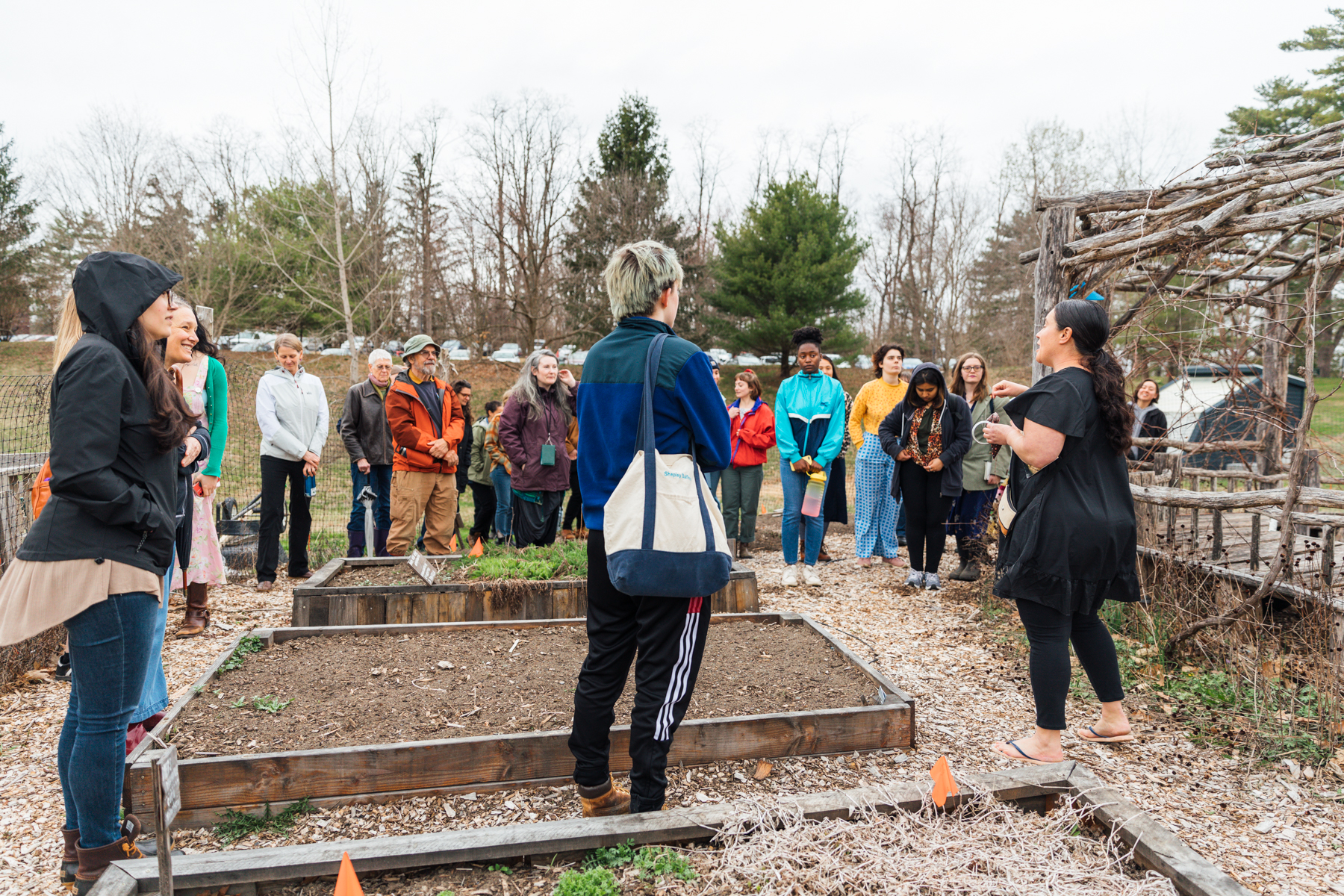

A notable mention was “Number 6,” also known as Wild Bergamot or Monarda, whose licorice-like smell remained after a winter outside.
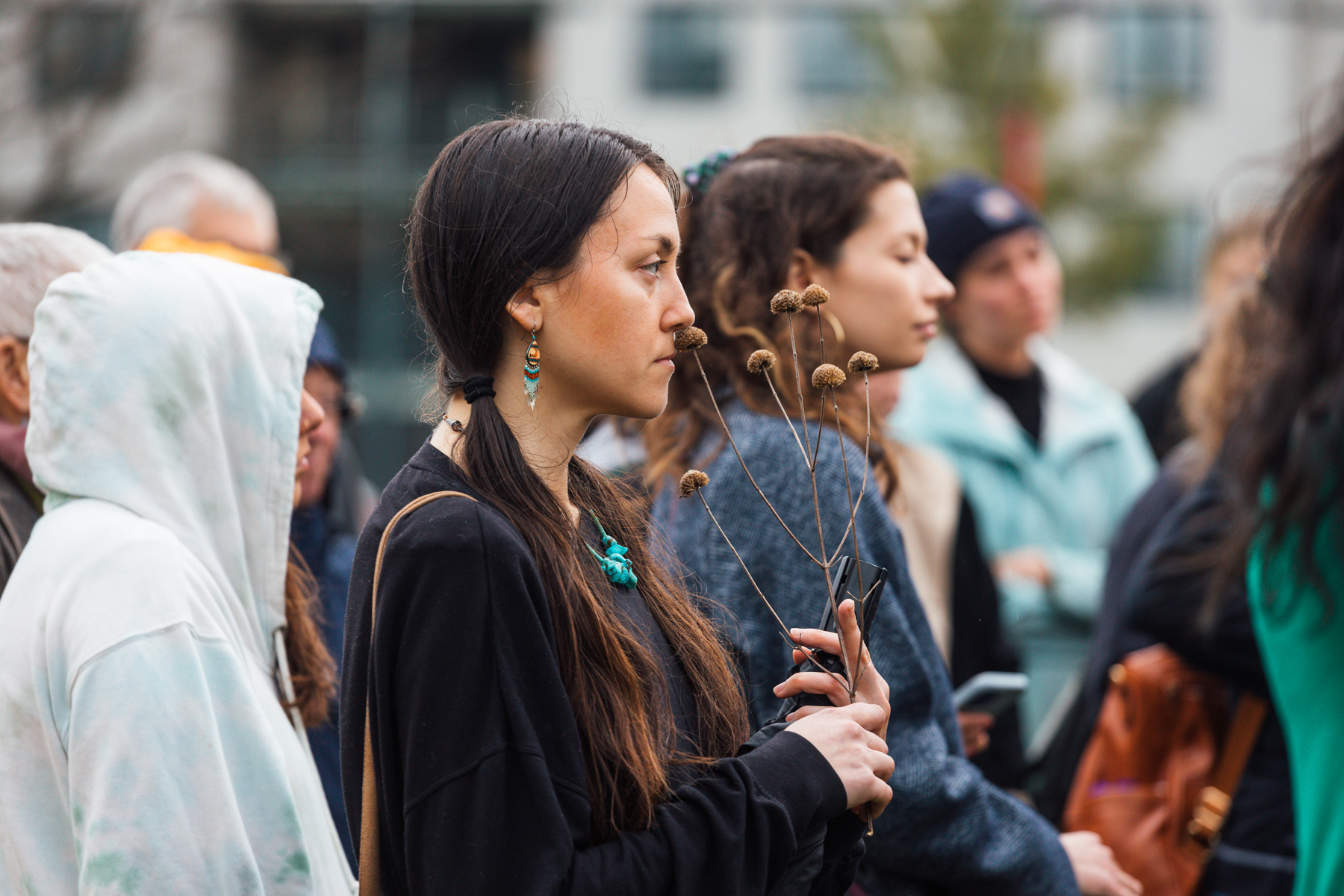
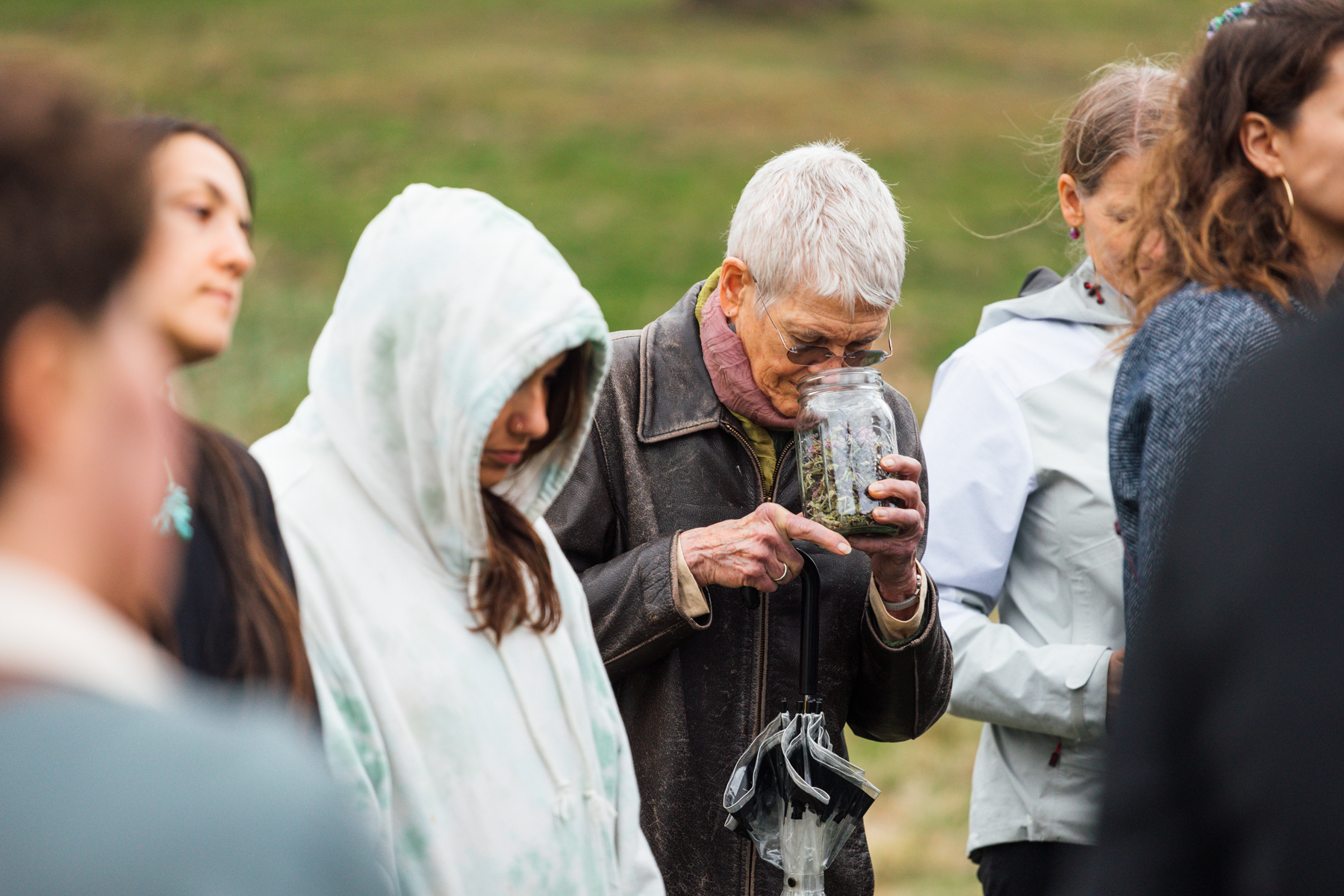
Inter-species connections continued, as we witnessed the grub in the seed pod of a goldenrod, emerging from winter slumber, which Misty shared members of her community often use for fishing bait.
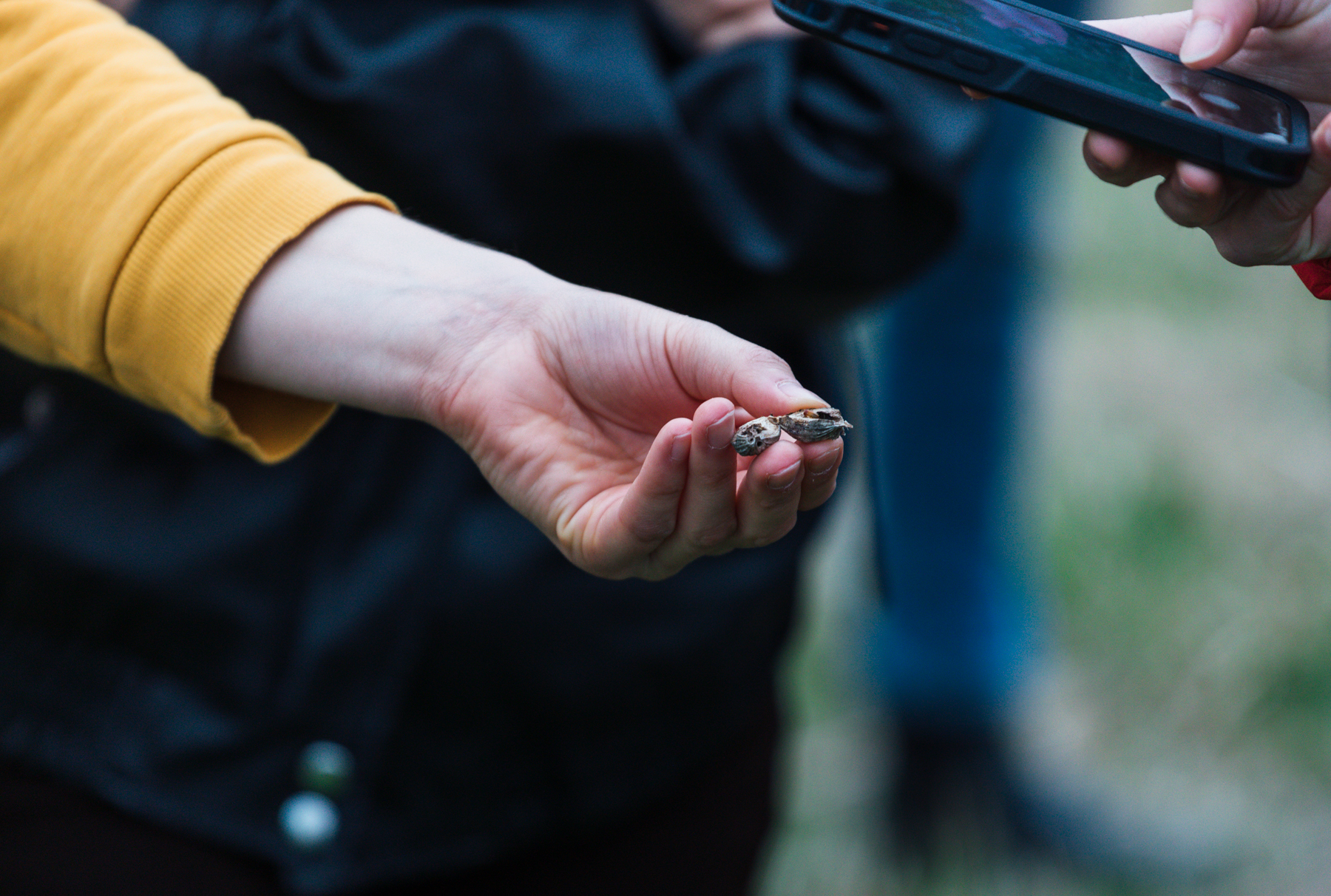
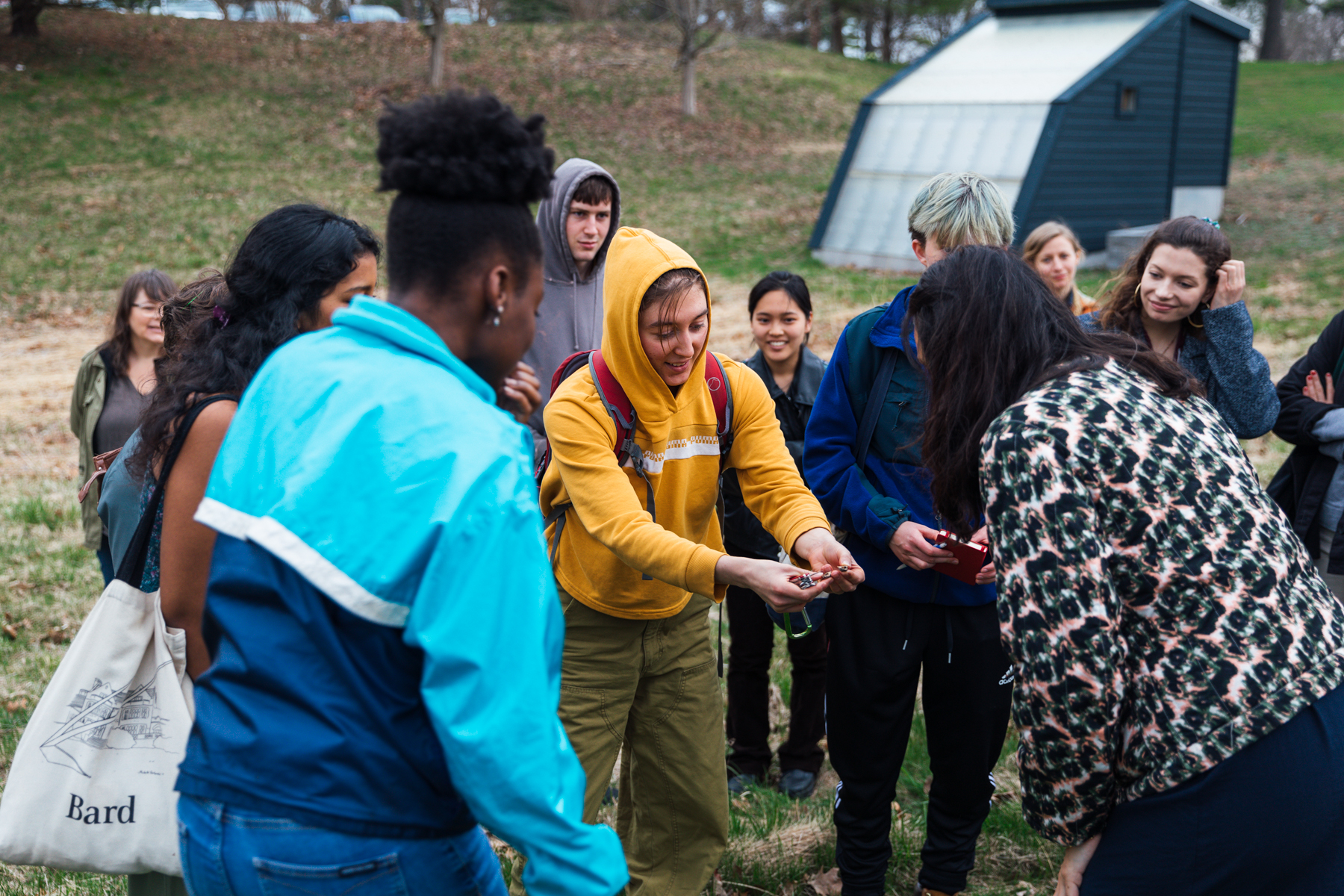
Further sources on acknowledging bioregional Native medicines on Native lands:
Brooks, Joanna, ed. 2006. The Collected Writings of Samson Occom, Mohegan. New York: Oxford University Press.
Melissa Tantequidgeon (lineage of Mohegan medicine people via Gladys Tantaquidgeon, noted below)
Occom, Samson, “”Herbs & Roots” (1754) by Samson Occom,” Indigenous New England Digital Collections, accessed October 28, 2019, https://dawnlandvoices.org/collections/items/show/257.
TANTAQUIDGEON, GLADYS. Folk Medicine of the Delaware and Related Algonkian Indians. Pennsylvania Historical and Museum Commission, 1977.
WISECUP, KELLY. “Medicine, Communication, and Authority in Samson Occom’s Herbal.” Early American Studies 10, no. 3 (2012): 540-65. http://www.jstor.org/stable/23546693.
WISECUP, KELLY. Medical Encounters: Knowledge and Identity in Early American Literatures. University of Massachusetts Press, 2013. http://www.jstor.org/stable/j.ctt5vkb14.
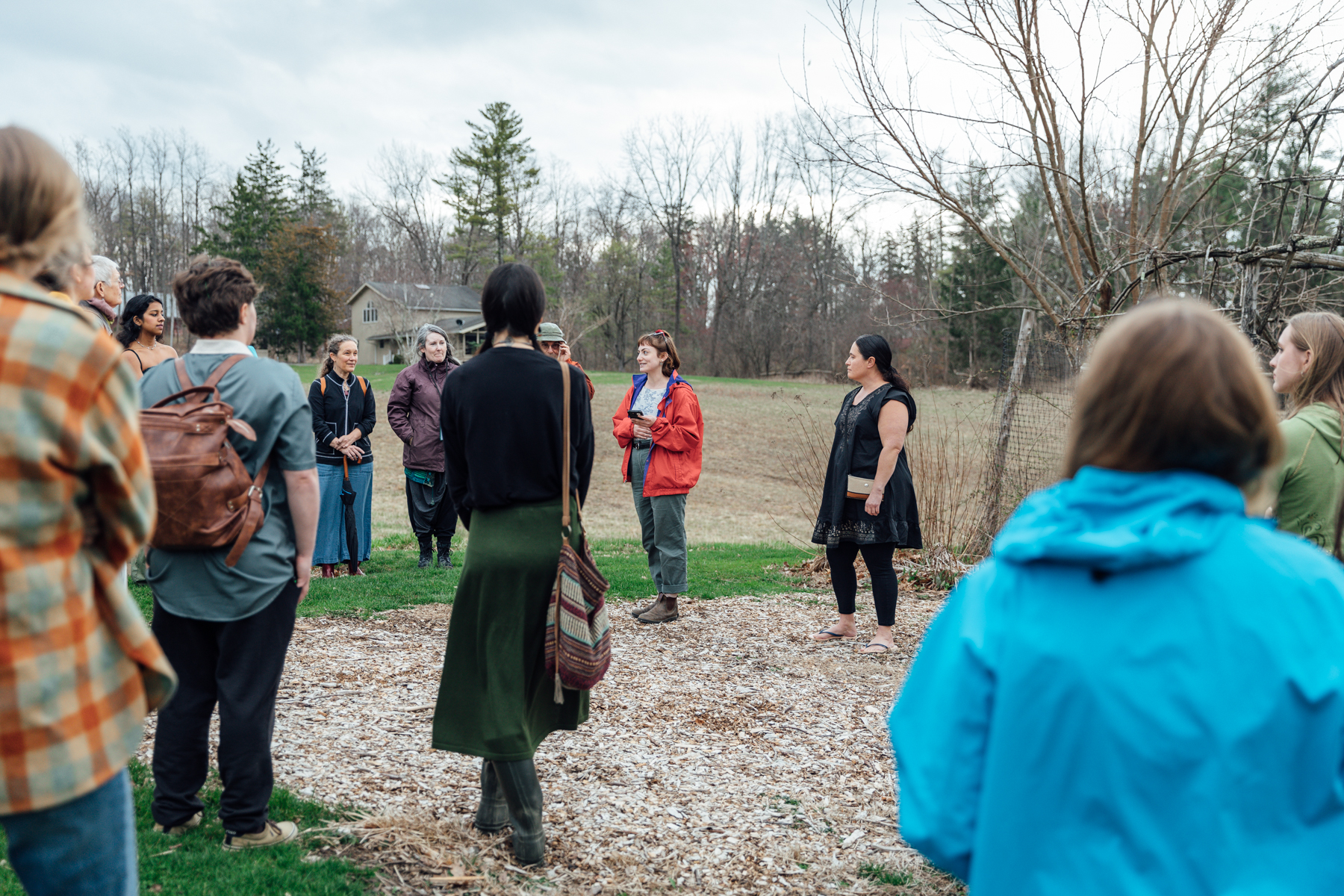
Reply